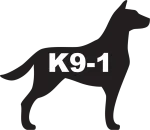Two experiments were run to demonstrate the presence of a partial reinforcement extinction effect (PREE) and a partial punishment effect (PPE) 4 weeks after training in a 1-trial/day procedure. In the PREE paradigm, two groups of animals were trained to run a straight alley for food reward; one group was rewarded on every trial (CRF), whereas the other was rewarded on only 50% of the trials (PRF). In the test phase, extinction, no reward was present on any trial. Four weeks after the end of acquisition, and subsequent to 7 days of CRF retraining, PRF animals showed greater resistance to extinction than did their CRF controls. The PPE paradigm resembled the PREE paradigm in all aspects, except that mild electric footshock, together with the food reward, was used instead of nonreward on 50% of the acquisition trials. In the test phase, all animals were shocked and given a food reward on every trial. Four weeks after the end of acquisition and retraining, the animals with previous experience of shock in acquisition showed greater resistance to punishment than did their controls.
- Home
- Knowledge Base
- Scientific Studies Relevant to Dog Training
- Punishment
- Long-term partial reinforcement extinction effect and long-term partial punishment effect in a one-trial-a-day paradigm, Shemer and Feldon
Long-term partial reinforcement extinction effect and long-term partial punishment effect in a one-trial-a-day paradigm, Shemer and Feldon
Article Attachments
Related Articles
- Clinical Signs Caused by the use of Electric Training Collars on Dogs in Everyday Life Situations
- Rethinking Positive and Negative Reinforcement in Dog Training: Jack Michael’s Argument for Simplified Terminology (1975)
- Comparison of the Efficacy and Welfare of Different Training Methods in Stopping Chasing Behavior in Dogs, Johnson, A.C., & Wynne, C.D.L. (2024)
- Negative Effects of Positive Reinforcement, Michael Perone 2003
- Reviving Tortora’s Technique: How Foundation Style Dog Training Solves Old Criticisms
- Discriminative Properties of Punishment by William C. Holz and Nathan H. Azrin


Responses